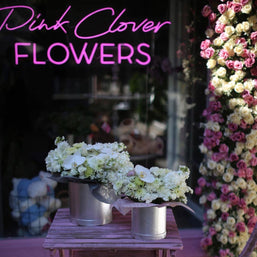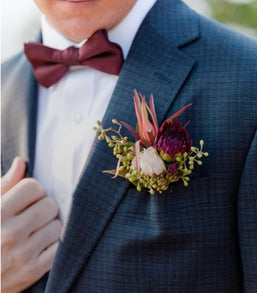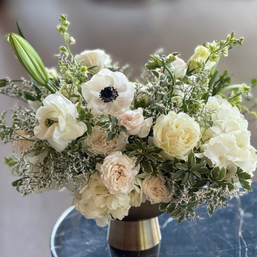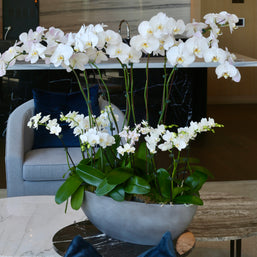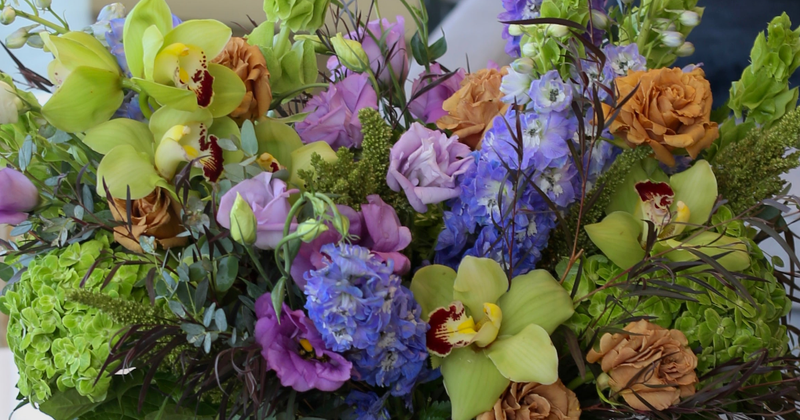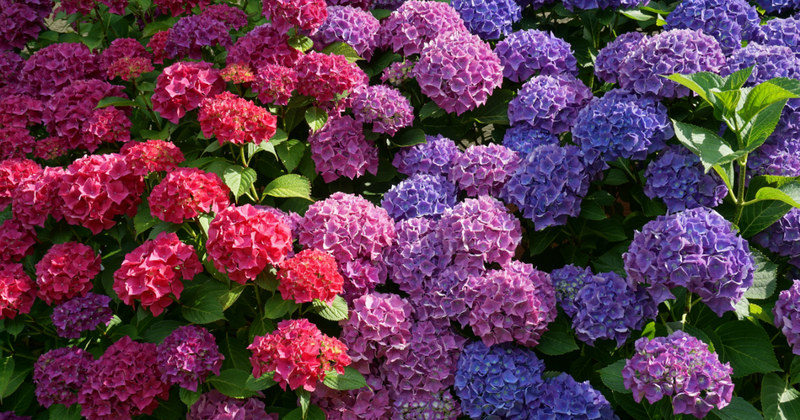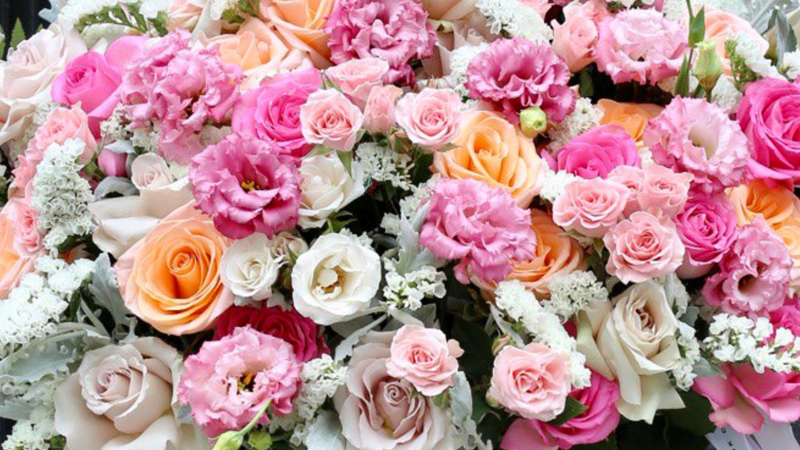If your birthday falls in September—or someone special in your life was born this month—then you’ve got two beautiful flowers to represent it: aster and morning glory. Unlike months with just one bloom, September gives you a duo full of color, symbolism, and late-summer charm.
These flowers don’t just look lovely in a bouquet—they each carry a unique meaning rooted in history and culture. In this article, we’ll explore what makes aster and morning glory the birth flowers of September, what they symbolize, and how to use them in arrangements, gifts, home decor, and even tattoos.
What Is September’s Birth Flower?
September has not one, but two birth flowers: the aster and the morning glory. Both bloom right around the change of seasons and reflect qualities often associated with September-born people—thoughtful, warm, and a bit mysterious.
Asters are known as the traditional September flower, while morning glories bring a softer, more ethereal energy to the mix. Whether you're into history, meaning, or just beauty, there's something special about these two blooms.
What Is the Aster Birth Flower Meaning?

Asters are late bloomers—in the best way. Their star-like shape and vibrant colors make them a standout in any garden or bouquet. But they’re more than just pretty. Asters are all about wisdom, loyalty, love, and inner strength.
Aster Flower Meaning in History and Culture
The aster has carried meaning and mystery for centuries, weaving its way through myth, medicine, and art. In ancient Greece, the star-shaped blooms were linked to the heavens—the name itself comes from the Greek word for “star.” People believed asters could bring protection and good fortune, and it was common to burn the flowers as fragrant offerings to the gods to invite their favor and keep negativity away.
Centuries later, during the Victorian era, asters took on a new layer of significance in the language of flowers. Because their message was subtle, they became a way to express emotions that were difficult to speak aloud. A simple bouquet of asters could quietly communicate admiration, unspoken love, or a wish for continued faithfulness.
In Native American traditions, asters were valued not just for their beauty but also for their practical uses. Certain tribes brewed the petals and leaves into herbal remedies believed to help with headaches, colds, and seasonal ailments, blending the flower’s delicate appearance with a reputation for gentle healing.
Over time, these many influences have merged into the modern symbolism we know today. Asters represent deep love, patience, and the strength to endure life’s changing seasons. Their late-summer bloom, arriving just as many other flowers fade, reinforces the idea of resilience and quiet devotion—a reminder that beauty and love can thrive even as the days grow cooler.
Aster Colors and Their Symbolism
Different aster colors tell different stories:
-
Purple: Wisdom and mystery

-
Pink: Love and thoughtfulness

-
White: Innocence and honesty

-
Red: Passion and courage

So whether you're sending flowers to a friend or picking a bouquet for your home, you can choose a color that fits the message you want to send.
How to Use Aster Birth Flower in Bouquets
Asters are a florist’s favorite for late-summer and autumn designs because they stay fresh for days and blend beautifully with countless other blooms. Their star-shaped petals and wide range of colors—from lavender and deep purple to soft pink and white—bring both texture and a gentle pop of color to arrangements of every style.
For birthday bouquets, asters pair gracefully with classic roses or bold dahlias, adding a light, feathery contrast that highlights the richness of larger blooms. In weddings, they lend a symbolic touch of love and patience, making them perfect for bridal bouquets, bridesmaid posies, or delicate floral crowns. Their long stems and resilient nature also make them ideal for seasonal centerpieces, where they mingle naturally with eucalyptus, berries, and other fall accents to create a warm, inviting atmosphere.
Asters even shine in sympathy arrangements, where their quiet beauty and enduring symbolism of remembrance offer comfort without overpowering more traditional blooms. Whether featured as the main attraction or used as a soft filler flower, asters adapt to any design and add a timeless, meaningful elegance to bouquets for every occasion.
What Is the Morning Glory Birth Flower Meaning?

Morning Glory Meaning and Symbolism
Morning glories truly live up to their name, unfurling their trumpet-shaped blooms in the cool early hours and gently closing as the day grows warm. This daily rhythm of opening and fading has made the flower a graceful emblem of new beginnings, the fleeting nature of time, and the beauty of living in the present moment. Each blossom reminds us that every sunrise offers a fresh start and that life’s most delicate joys are often temporary but deeply precious.
Morning Glory Symbolism in Traditions
Across the world, morning glories have carried poetic meaning for centuries. During the Victorian era, they represented a love that is unspoken or destined to be short-lived—feelings too intense or too fragile to last, captured in the bloom’s brief daily display. In Japan, where the flower is known as asagao, morning glories have long been admired during summer festivals and are often associated with fleeting love or the sweet ephemerality of a summer romance.
Chinese folklore tells of a tender legend in which two lovers, separated by circumstance, are allowed to meet only once a year, a story perfectly mirrored by the morning glory’s brief yet radiant flowering. The plant’s delicate vines and heart-shaped leaves climb toward the light with quiet determination, offering a gentle reminder to cherish each day’s opportunities and connections.
Whether winding along a garden trellis or brightening a morning bouquet, the morning glory speaks softly of impermanence and renewal—an invitation to savor the present and greet every dawn with hope and gratitude.
What Do Morning Glories Symbolize in Different Colors?

Each color of morning glory has its own vibe:
-
Blue: Peace and calm
-
Purple: Healing and spirit
-
Pink: Affection and softness
-
Red: Strong emotion and drive
-
White: Clarity and clean slates
They’re ideal for expressing feelings in a subtle, poetic way.
Morning Glory Birth Flower in Art and Celebrations
You might be surprised how often morning glories appear in art:
-
Japanese scroll paintings and summer kimonos
-
Tattoos that symbolize renewal or remembrance
-
Handmade cards or birthday gifts for September babies
They’re delicate, emotional, and quietly powerful.
How Do Aster and Morning Glory Represent September Flowers?
These two blooms perfectly reflect the spirit of September—a month that sits between summer’s warmth and fall’s reflection.
September Flowers and Zodiac Connections

September is split between two zodiac signs: Virgo and Libra.
-
Virgos (Aug 23 – Sept 22) are known for being thoughtful, calm, and intelligent—very much in line with the grounded, quiet symbolism of the aster.
-
Libras (Sept 23 – Oct 22) are ruled by balance, beauty, and emotion—qualities reflected in the romantic, expressive morning glory.
Birth Flower for September and Personality Traits

If you’re a September baby, your flowers suggest you’re someone who:
-
Values connection and meaning
-
Has a thoughtful, maybe even philosophical side
-
Appreciates nature and personal rituals
-
Moves gracefully through life’s changes
What Are Creative Uses of September Birth Month Flowers?
You don’t have to wait for a birthday to bring these blooms into your life. Aster and morning glory can show up in decor, gifts, or even self-expression.
September Birth Flower Tattoos and Symbolism

Floral tattoos are deeply personal, and these two are no exception:
-
Aster tattoos are often chosen for remembrance, loyalty, or a quiet inner strength.
-
Morning glories make a beautiful tattoo choice for those who value change, resilience, or emotional growth.
You can go subtle with a fine-line wrist design or bold with a colorful sleeve.
Decorating with September Flowers at Home

Bringing these blooms into your space is easy:
-
Place fresh asters in mason jars on the kitchen table
-
Frame pressed morning glories for a seasonal wall print
-
Use floral patterns in linens or artwork to create a cozy September vibe
They make any space feel calm and meaningful.
Gifting September Flowers for Birthdays and Anniversaries
Need a gift for someone born this month?
-
Try a bouquet of purple asters and creamy roses
-
Mix morning glories with autumn foliage for a bold look
-
Add a card that explains the meaning of each flower—people love the extra touch
Conclusion
So, what is September’s birth flower? Turns out, it’s two meaningful blooms: the aster, full of loyalty and depth, and the morning glory, a delicate reminder to live in the moment.
Whether you’re sending flowers to a friend, choosing a tattoo, or decorating your space, these blooms offer beauty with meaning. At Pink Clover, we love creating custom floral arrangements using seasonal favorites—including September’s best.
Need a birthday bouquet or anniversary arrangement? Explore our shop or contact us for same-day flower delivery in Los Angeles.
FAQs
Why does September have two flowers?
Some months, like September, have two flowers to reflect different cultural traditions and seasonal options. Aster is the classic pick, while morning glory adds a romantic flair.
What is the traditional September flower?
The aster is most often listed as the traditional flower for September, known for its star shape and symbolic meaning tied to love, wisdom, and strength.
What is the September flower tattoo?
September flower tattoos often feature the aster or morning glory—symbols of change, resilience, love, or remembrance.
What do morning glories symbolize for September birthdays?
They represent fleeting beauty, affection, and emotional insight—great for those who value meaningful connections.
What is the aster flower meaning in different cultures?
In Greek, Native American, and Victorian traditions, asters symbolized protection, healing, and deep emotional expression.
How can I use September birth flowers in bouquets and gifts?
Include asters or morning glories in birthday arrangements, anniversary gifts, or fall home decor. Their symbolism adds a layer of thoughtfulness.
What colors are most common for September birth flowers?
For asters: purple, pink, white, and red. For morning glories: blue, purple, pink, and white are most common.
Want more floral tips, behind-the-scenes content, and gift ideas?
Follow @pinkclover_flowers on Instagram and check out our Pinterest boards for more ways to celebrate each season.
